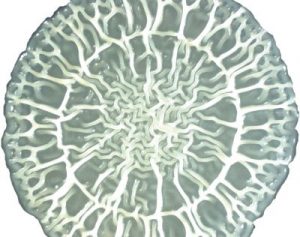This Week in PLOS NTDs and PLOS Pathogens: NTD Elimination in a Shifting Policy Landscape, the Biology of Microbial Amyloids, Duplication of the Duffy Binding Protein Gene in P. vivax Strains
The following new articles are publishing this week in PLOS NTDs:

The concept of NTDs was established in the aftermath of the Millennium Development Goals. Here, Dr. Peter Hotez summarizes the emergence of several new post-2010 global health documents and policies, and how they may alter the way we frame the world’s major NTDs since they were first highlighted. These documents include a new Global Burden of Disease Study 2010 that identifies visceral leishmaniasis and foodborne trematode infections as priority diseases, a London Declaration for access to essential medicines, and a 2013 World Health Assembly resolution on NTDs.
Over the past five years, researchers are reporting with increasing frequency that Duffy-negative individuals are infected with P. vivax, raising new questions as to how P. vivax infects the red blood cells when the Duffy blood group antigen is not available. In this paper Didier Menard and colleagues show that the parasite’s Duffy binding protein gene has been duplicated in multiple P. vivax strains, especially at high prevalence in Madagascar.
While histoplasmosis may not be a neglected disease in North America, in South America the story is very different, and it represents a lethal blind spot of the HIV/AIDS data collection systems. In this editorial, Mathieu Nacher and colleagues urge public health officials to give increased attention to this fungal infection in HIV/AIDS immunosuppressed patients by raising public awareness and making tests and treatments more readily available.
The following new articles are publishing this week in PLOS Pathogens:
It has been thought that the gut microbiome, made up of benign resident anaerobic bacteria, protects its host from food-borne illnesses by outcompeting pathogenic bacteria through microbe-microbe interactions. However, as Andreas Bäumler and colleagues discuss in their Pearl, recent studies suggests that “colonization resistance” is more complicated and mediated by microbe-host interactions that maintain intestinal immune homeostasis.
The curli fibers of E. coli were the first bacterial amyloids discovered and studied. Since then, curli-encoding genes have been found in many bacterial species, suggesting that amyloids are a common and important part of the bacterial lifestyle. In their Pearl, Matthew Chapman and colleagues discuss what we know about the roles of amyloids in the interaction of bacteria with their hosts, with other microbes, and their environment.
Two articles report new strategies to control malaria by interrupting the lifecycle of the parasite in the mosquito host. Paul Eggleston and colleagues have identified molecules, many derived from wasp and bee venoms, that are toxic to the parasite but not to its mosquito host and thus show promise for inclusion in genetic modification strategies. Rhoel Dinglasan and colleagues have developed a decoy molecule that mimics structures on the mosquito gut surface and, in feeding experiments, interferes with parasite infection.
